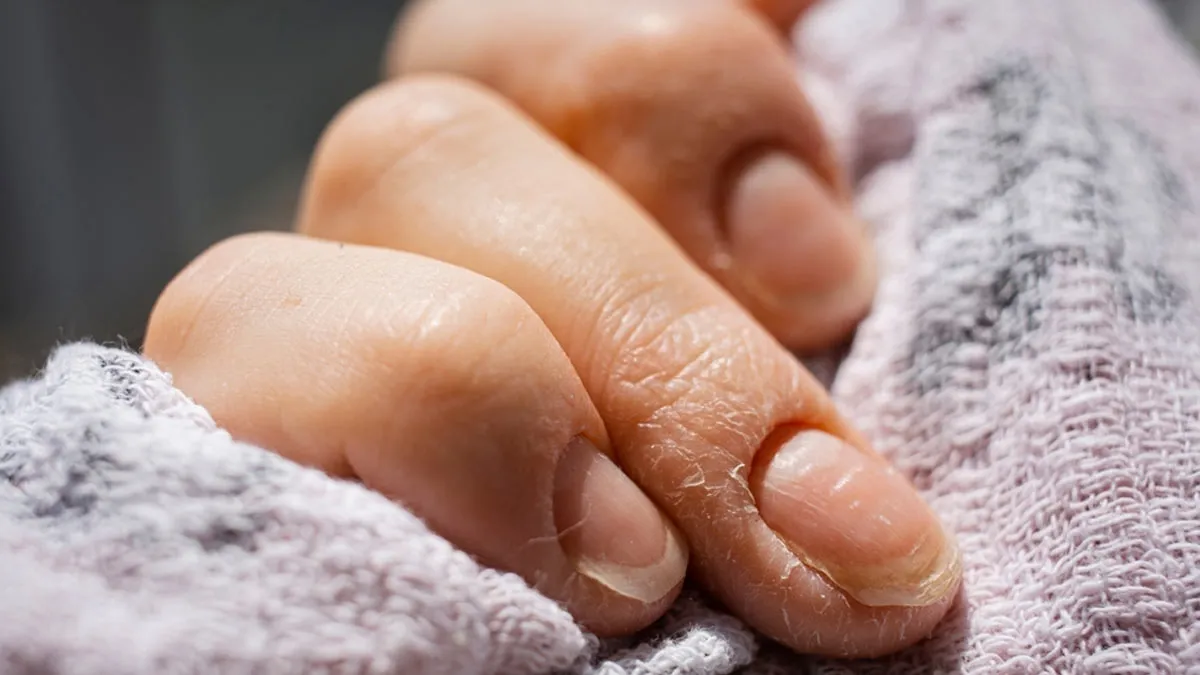
Stress has a sneaky way of showing up in unexpected places, and your nails are no exception. While we might notice tension in our shoulders or a restless night’s sleep, the changes in our nails often go unnoticed. Just like stress can affect our skin or hair, it can subtly impact our nails too. If you're noticing changes in your nails, it might be time to check in with yourself and see how stress might be affecting your body.
Table of Content:-
Signs Of Stress Showing Up In Your Nails
1. Weak and Brittle Nails
If you've noticed your nails are breaking more easily or feel thin and weak, stress may be a factor. Chronic stress can interfere with the body’s ability to absorb nutrients, particularly those essential for nail strength, like biotin, zinc, and vitamins C and E. When these nutrients are depleted, nails lose their natural resilience, becoming fragile and prone to splitting or breaking.
Long-term stress can also reduce blood flow to the extremities as the body prioritises critical organs over others during high-stress periods. This reduced circulation can slow nail growth and make nails weaker. If your nails are becoming more brittle, it could be a sign that your body is struggling to cope with ongoing stress.
Also Read: Nail Care For Diabetics: Follow These Tips To Maintain Healthy Feet and Hands
2. Nail Ridging (Horizontal Lines)
One telltale sign of significant stress or trauma on your nails is the appearance of horizontal ridges, known as Beau’s lines. These lines form when the nail growth process is interrupted, usually due to illness or severe stress. Beau's lines may take weeks or even months to appear because of the time it takes for nails to grow, but they can serve as a historical marker for periods of stress.
Unlike vertical ridges, which are common and often related to ageing, horizontal ridges are a sign of temporary disruption in nail growth. If you’ve recently experienced a period of intense stress or an illness, you might see these lines as the nails continue to grow out.
3. Peeling or Flaking Nails
Have you ever noticed your nails starting to peel or flake, particularly during stressful times? Stress can significantly impact our nails. When stressed, our body’s hydration and nutrient balance can be disrupted, leading to dry and brittle nails. Hormonal changes associated with stress can also affect hydration levels, making nails more susceptible to peeling or flaking. Without adequate hydration, nails lose their flexibility, increasing the likelihood of flaking and peeling. This often manifests as layers of the nail lifting or separating, resulting in a rough and uneven texture.
4. Nail Biting and Picking
While nail biting and picking aren’t direct signs of stress on the nails themselves, these habits often increase during times of anxiety. According to a 2021 study, various stressors, such as school pressure or family issues, can worsen impulsive nail-biting. This increase in behaviour is often linked to underlying anxiety, which triggers a cycle of impulsive actions that temporarily soothe the individual.
Over time, these behaviours can damage the nails and the surrounding skin, leading to further complications like infections, bleeding, and changes in nail shape. For those who struggle with nail-biting, recognising it as a response to stress can be the first step toward managing the habit.
Also Read: Home Remedies: How To Treat The Toenail Fungus At Home
5. Slow or Stunted Nail Growth
When you're stressed for a long time, your body prioritises dealing with stress over other functions, like nail growth. Stress can slow blood flow, reducing the nutrients and oxygen reaching your nails, which may cause them to grow slower than usual. If your nails aren’t growing as they normally do, it might be a sign that stress is taking a toll.
6. White Spots or Discolouration
White spots on the nails are generally associated with minor trauma or a lack of nutrients, but stress can also contribute to discolouration. When stress affects your body’s ability to absorb nutrients, it can lead to mineral deficiencies, causing white spots. Stress can also affect circulation, leading to yellowing or darkening of the nails. If you notice changes in your nails, it’s important to pay attention, especially if you're experiencing other signs of stress.
Caring for Your Nails and Managing Stress
If you’re noticing these signs in your nails, taking steps to manage your stress is essential. Here are a few tips:
- Focus on Nutrition: Ensure you’re getting a balanced diet with essential nutrients for nail health, such as biotin, zinc, and vitamins C and E.
- Stay Hydrated: Drinking plenty of water helps maintain healthy nails, as dehydration can make them more prone to brittleness and peeling.
- Practice Mindfulness: Techniques like meditation, yoga, and deep breathing can help lower stress levels, potentially improving nail health.
- Use Nail Strengtheners: Products that contain keratin and other strengthening ingredients can provide extra support while you work on reducing stress.
[Disclaimer: This article contains information for informational purposes only, hence, we advise you to consult your own professional if you are dealing with any health issues to avoid complications.]
Also watch this video
How we keep this article up to date:
We work with experts and keep a close eye on the latest in health and wellness. Whenever there is a new research or helpful information, we update our articles with accurate and useful advice.
Current Version